| Abstract | Art terapija kao interdisciplinarno područje, koje objedinjuje psihologiju i umjetnost, relativno je novi pojam u znanosti koji je došao do izražaja tek početkom 20. stoljeća. Nažalost, i dalje se smatra sekundarnim terapeutskim pristupom nasuprot klasičnim oblicima terapije. Ona usmjerava prirodno urođenu kreativnost kako bi potakla ekspresiju i rješavanje unutrašnjih nemira i problema kroz ekspresivni medij umjetnosti. Art-terapija obuhvaća širok spektar elemenata umjetnosti poput glazbe, drame, pokreta i plesa, poezije, slikanja, crtanja, modeliranja. Ove elemente koristi kao medije u aktivnostima pomoću kojih, kroz terapijski proces u komunikaciji s terapeutom, pacijenti otkrivaju i izražavaju svoje emocije, te rješavaju unutrašnje probleme. Rad će se ponajprije dotaknuti teorijskog pojma kreativnosti i potencijala koji on nosi za pojedinca općenito te njegovu ulogu u art-terapiji. Nadalje, fokus će biti na povijesnom razvoju art-terapije sagledavajući ulogu tog područja od samih početaka, u dobi kada je korištena za šamanske rituale, do 1940-ih godina kada se počinje otkrivati njen potencijal za liječenje i unaprjeđenje kvalitete oporavka i ljudskog života općenito. Iz teorijske i praktične perspektive sagledat će se specifičnosti koje opisuje to područje i njezin širok spektar mogućnosti primjene; od odgojno-obrazovnog rada s djecom, do rada s oboljelima od demencije, Parkinsona, Alzheimera, do rada u zatvorima i raznim drugim socijalnim ustanovama. Područje primjene art-terapije u teoriji čini se neograničeno. Unatoč tome, istraživanja su o toj tematici oskudna, a ustanove se rijetko i odlučuju za takve tretmane. To je naročito vidljivo u Hrvatskoj koja nema ni verificirane edukacije ni smjerove obrazovanja za to područje. To je tema na koju ćemo se također osvrnuti tijekom osvrta o nekolicini odabranih i relevantnih istraživanja koja će se spomenuti u radu. Naposljetku, drugi dio rada posvećen je istraživanju i analizi odgovora ispitanika o njihovom mišljenju i iskustvu s umjetničkim dnevnikom i art-terapijom. Iz rezultata istraživanja može se zaključiti kako je umjetnički dnevnik odlično sredstvo art-terapije i alat za bolje samorazumijevanje, no ima puno mjesta za napredak – ponajprije je potrebno bolje informiranje, usmjeravanje, praćenje i terapeutski rad sa stručnjakom za postizanje kvalitetnijih rezultata. |
| Abstract (english) | Art therapy as a psychological approach is a relatively new concept in science that came to the fore only at the beginning of the 20th century. Unfortunately it is still considered a secondary approach compared to classical forms of therapy. It directs the naturally innate capacity for creativity to encourage the expression and resolution of inner turmoil and problems through the expressive medium of art. Art therapy includes a wide range of art elements such as music, drama, movement and dance, poetry, painting, drawing, modeling - which they use as media in activities through the therapeutic process. In the process of communication with the therapist they discover and express their emotions and solve internal problems. The paper will primarily touch on the theoretical concept of creativity and the potential it carries for the individual in general, and its role in art therapy. Furthermore, the focus will be on the historical development of art therapy, looking at the role of this field from the very beginnings in the age when it was used for shamanic rituals, until the 1940s when its potential for healing and improving the quality of recovery and human life in general began to be discovered. From a theoretical and practical perspective, the specifics that describe that area and its wide spectrum of application possibilities will be reviewed; from educational work with children, to work with patients with dementia, Parkinson's, Alzheimer's, to work in prisons and various other social institutions. In theory, the field of application of art therapy seems unlimited, but despite this, there are few researches on this subject, and rarely institutes decide on such treatments. Although this is present abroad, it is especially visible in Croatia, which does not even have verified education and education courses for that area, a topic on which we will also refer to during the review of a few selected researches that will be mentioned further on in the paper. Finally, the second part of the paper is devoted to research and analysis of respondents' answers about their opinion and experience with art diary and art therapy. From the results of the research, it can be concluded that the art diary is an excellent means of art therapy and a tool for better self-understanding, but there is a lot of room for improvement - first of all, better information, guidance, monitoring and therapeutic work with an expert are needed to achieve better results. |

